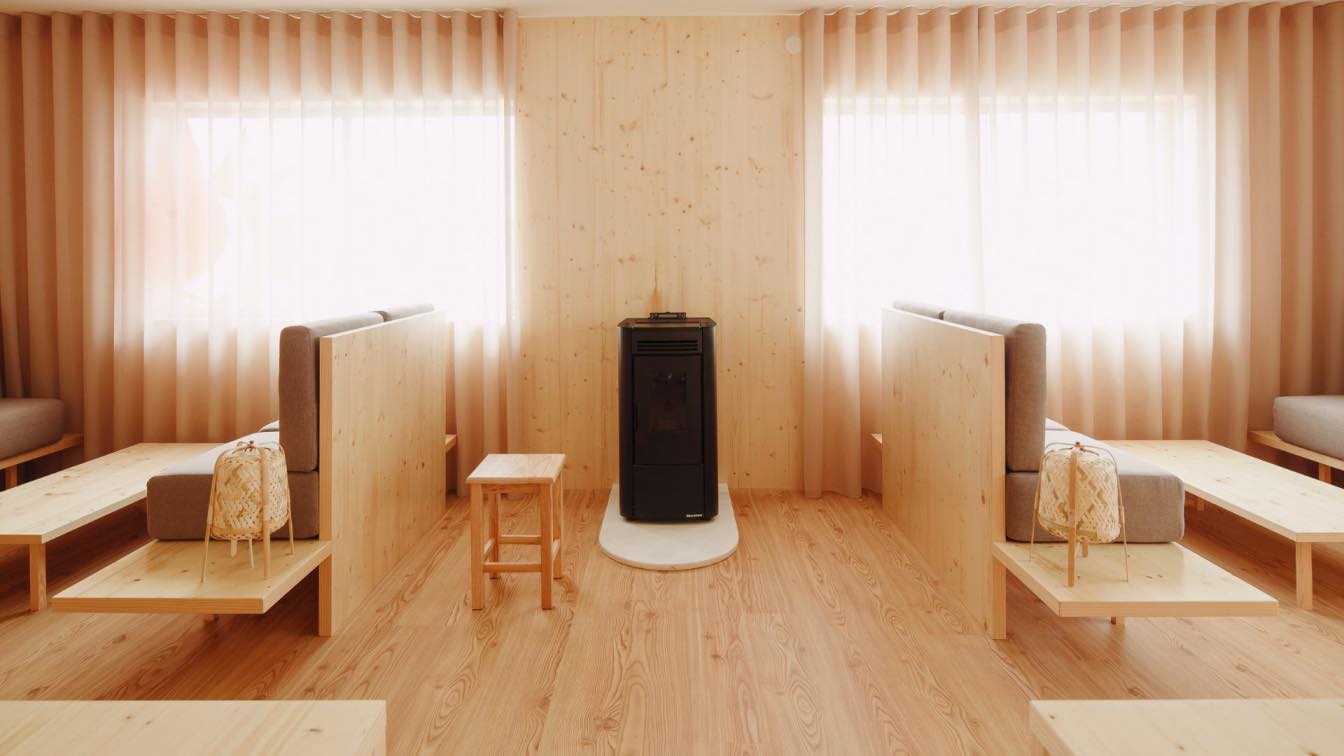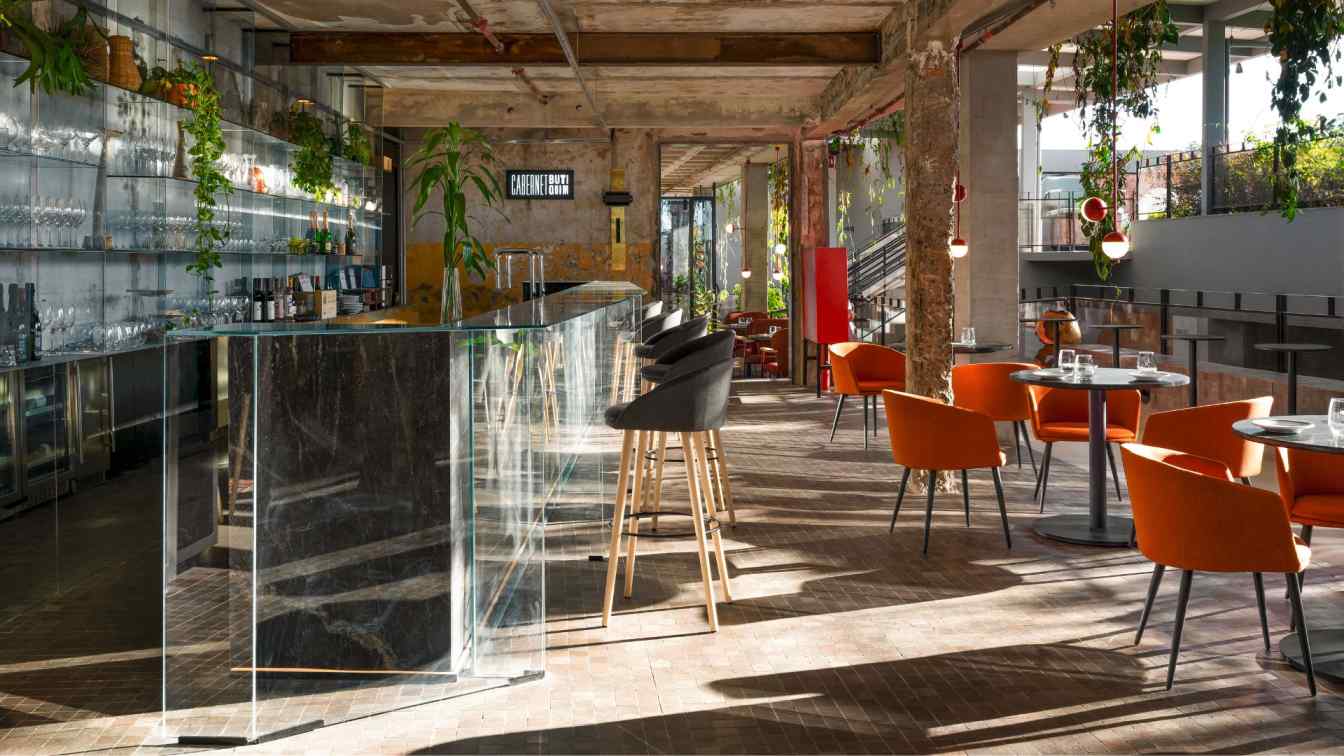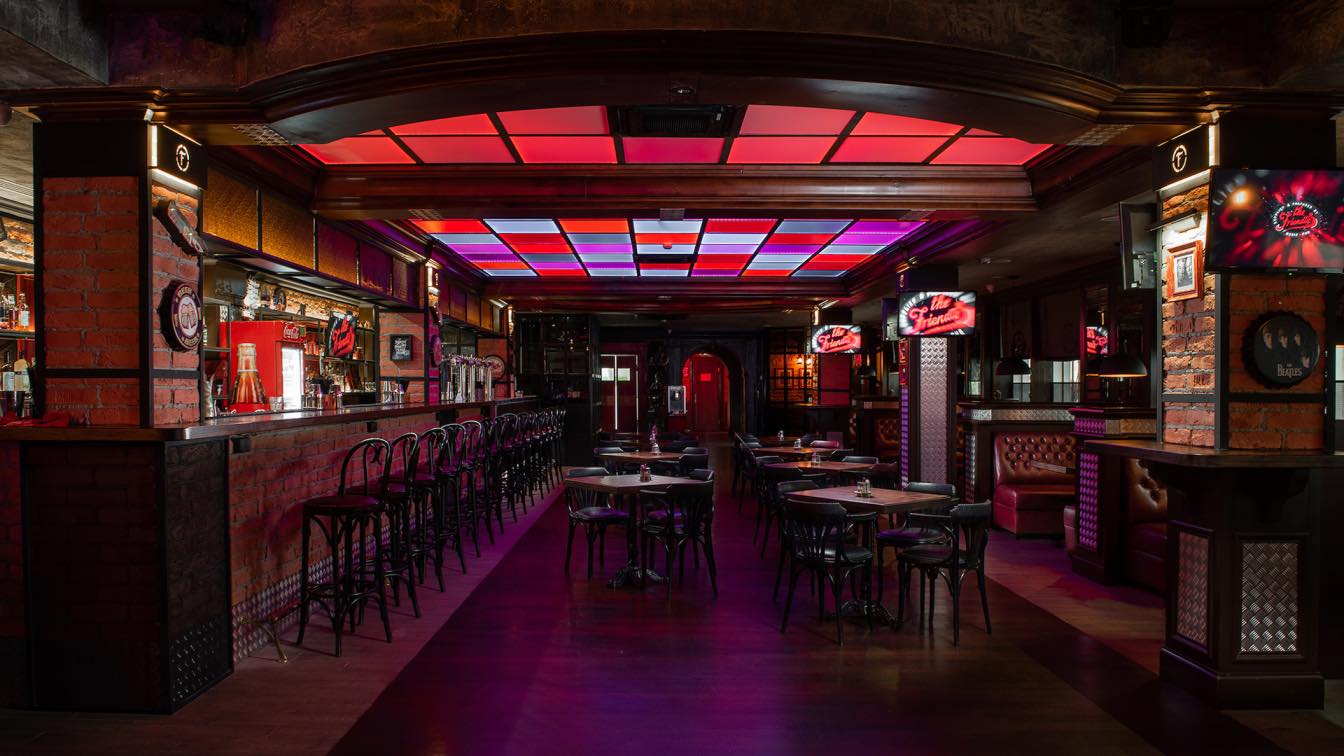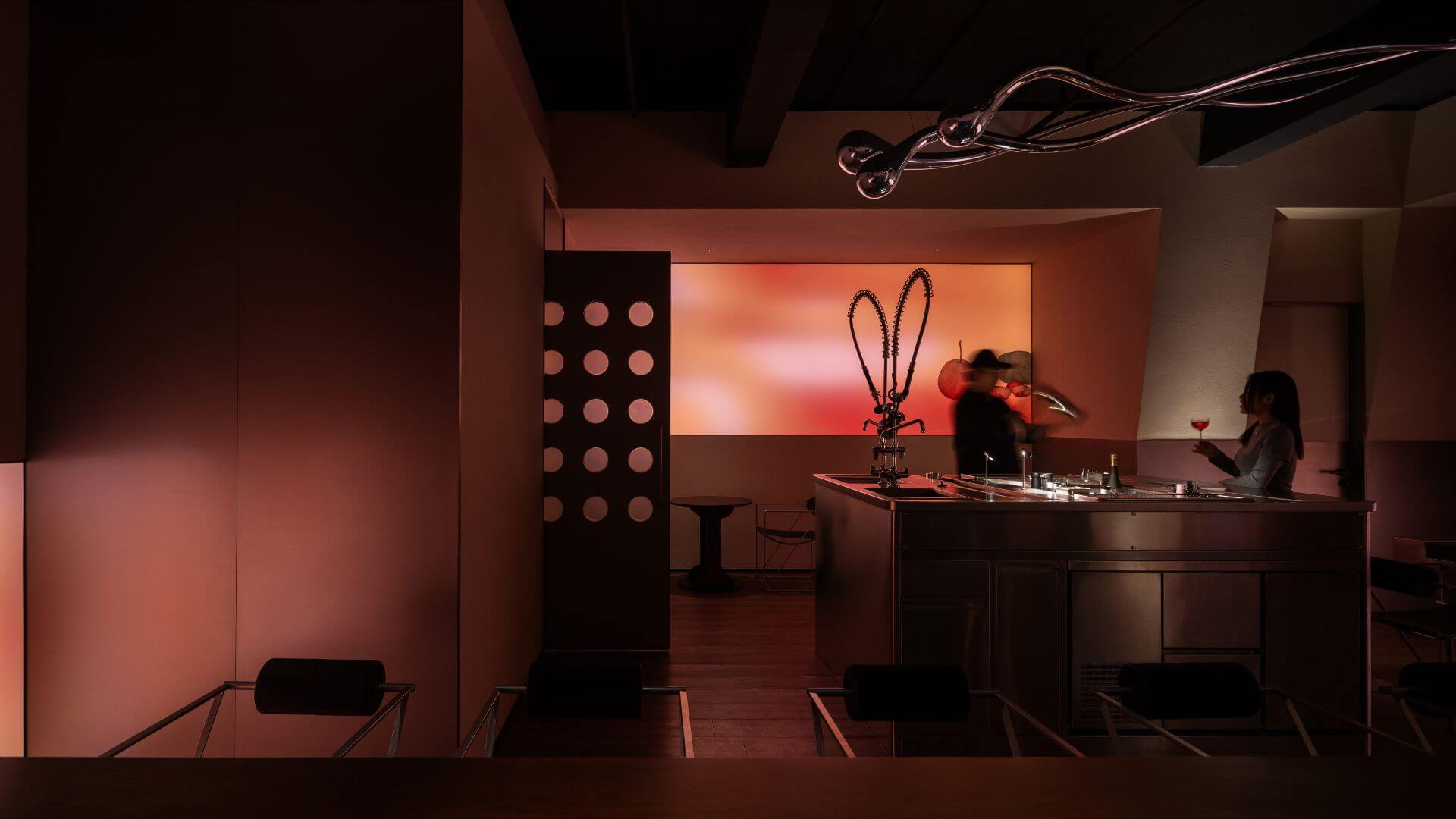The speakeasy place with a 150-year-old root over the bar counter, decorations, collected atflea markets of different countries and a cocktail lab on the second floor.
This bar is not a combination of walls, but a unique product that projects both the atmosphere and the interior.Every bartender has a dream to open his own bar, every detail of which would reflect his philosophy, attitude towards signature drinks. The creators of Temple were burning with the idea and turned to the designers of the Kvadrat Architects Studio for help to make their dream come true.There was no specific technical task. The task was set by describing the emotions and feelings that every guest-parishioner should feel. (This is how clients are called in the space).
“We decided to proceed step by step. The owners of the bar were bursting with ideas, sometimes they appeared spontaneously during the discussion, so we just had to get into the product and study potential guests: what emotional atmosphere and mutual connection they are waiting for, - designers and heads of the Kvadrat architects design studio Sergey Bekmukhanbetov and Rustam Minnekhanov say. “If you study the 3D visualization of the project, you understand how much the design has grown from the moment of idea to implementation, and it still continues evolving.”
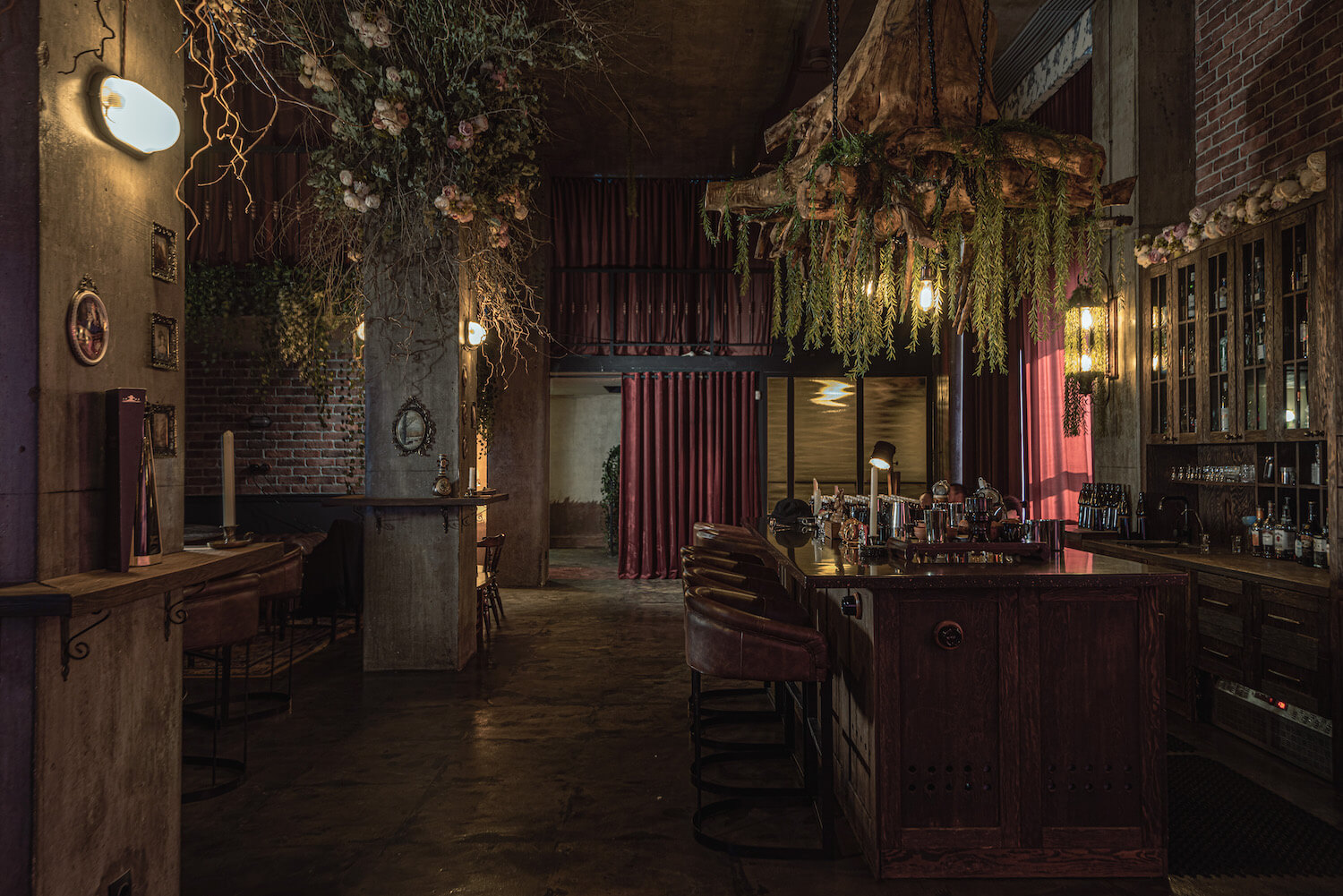
Mixology of tastes and sensations
The place is positioned as experimental: it works exclusively at night, the kitchen and snacks are not provided. Everything is focused on signature cocktails, on the mixology of flavors and aromas. There is no menu here, each drink is created specifically for the "parishioner" after a conversation with him. The guests of the bar are people who plan in advance to enjoy the microclimate and drinks of this conceptual place. To weed out casual visitors, they abandoned the sign. The bar is located on the second floor of the office wing of the complex, and nothing at the entrance indicates its existence. The door is always locked, you can get here only by booking.
The primary source
The original idea to create an interpretation of the old inactive temple turned into a bar was abandoned. The room is not old and it would look sham. The nuances should be read in more exquisite way, and the interior should be authentic, primordial, but not seem so. For this task, the concrete was uncovered, the structural columns were completely exposed, the old tiles were removed from the floor, leaving raw building materials, but not their imitation.As the bartenders of the space create mixes of aromas and tastes from basic products, so in architecture it was decided to keep the base, the foundation for creating a new image.The details of the interior were changed during the implementation of the project. Previously, the room was occupied by an office, so the flooring, standard glossy porcelain stoneware 60*60 cm in size, was inherited. Initially, it was decided to dismantle the tiles and pour concrete. But when the porcelain stoneware was removed, some glue and artistic stains were grinning through in places on the floor. The tiled square format was attractively traced on the concrete base, and this was the best combination with the general atmosphere. It was the organic part of the story. A beautiful spiral staircase leads to the second floor, where the bar's laboratory is located.

The magnetism of light
We decided to reflect the Temple's privacy, mystery, magnetism of the atmosphere with the help of soft light. Also it was set to put the main volumes of the room into the shade and selectively, using the light of candles, create a muffled lighting without sharp outlines.Zoning also occurs mainly with light. There are no partitions or high backs of the sofas. It is an “open space”, which is divided into sections by exceptional candle lighting on each table.It draws the boundaries of the seating area in-plane, just as the original carpets on the floordo.
Industrial sconces are placed on columns, but they serve more as decorative lighting and illumination for various vintage bronze frames.
The bar life
The space was created with such an aim that it should age nobly and gradually acquire of decors and signs of life.“As architects and designers, we have prepared a canvas on which life itself will apply artistic dabs. We set a vector in which way to select furniture, decor items. And the space continues changing and acquire of meanings, gets its own character,” - emphasize designers Rustam Minnekhanov and Sergey Bekmukhanbetov.The whole decor consists of unique items, saturated with history and time. They werebought by the bar owners and designers themselves, often during travelling. For example, after a long search, vintage bronze frames were found at the “Dry Bridge” flea market in Georgia. Expressive Chippendale style chairs were brought from the old estate of Almaty and restored with the utmost care.Although the main furniture is new, it will soon show its authenticity and originality.
It was upholstered with tanned genuine leather, which ages nobly and stretches in an interesting way. It turns into folds reminding people’s wrinkles, by which you can read the history of life and soul.By the same principle, they made a bar counter and a wardrobe, a round table. The woodages for a long time, and it takes decades to achieve the desirable effect. The time machine isnot invented, but there is a non-standard approach: the wood can be aged by firing and brushing. Designers accelerated the aging process mechanically without changing the nature of the material. As time goes by, the bar counter will only get better: absorb odors, age, dry out, crack - live. Tactilely and by smell, all the nuances are perceived right now.The image of candlesticks is also subordinated to this idea. The wax is not removed deliberately for expressiveness and massiveness.The bar counter is the heart of the room. Some architectural techniques were used to emphasize this, but the 150-year-old tree root became a metaphorical accent. It was brought from Petropavlovsk, the small homeland of the bar founders. It serves not only as the center of the interior composition, but also credits the atmosphere with a special meaning - to remember the past in order to understand yourself better and plan for the future.


